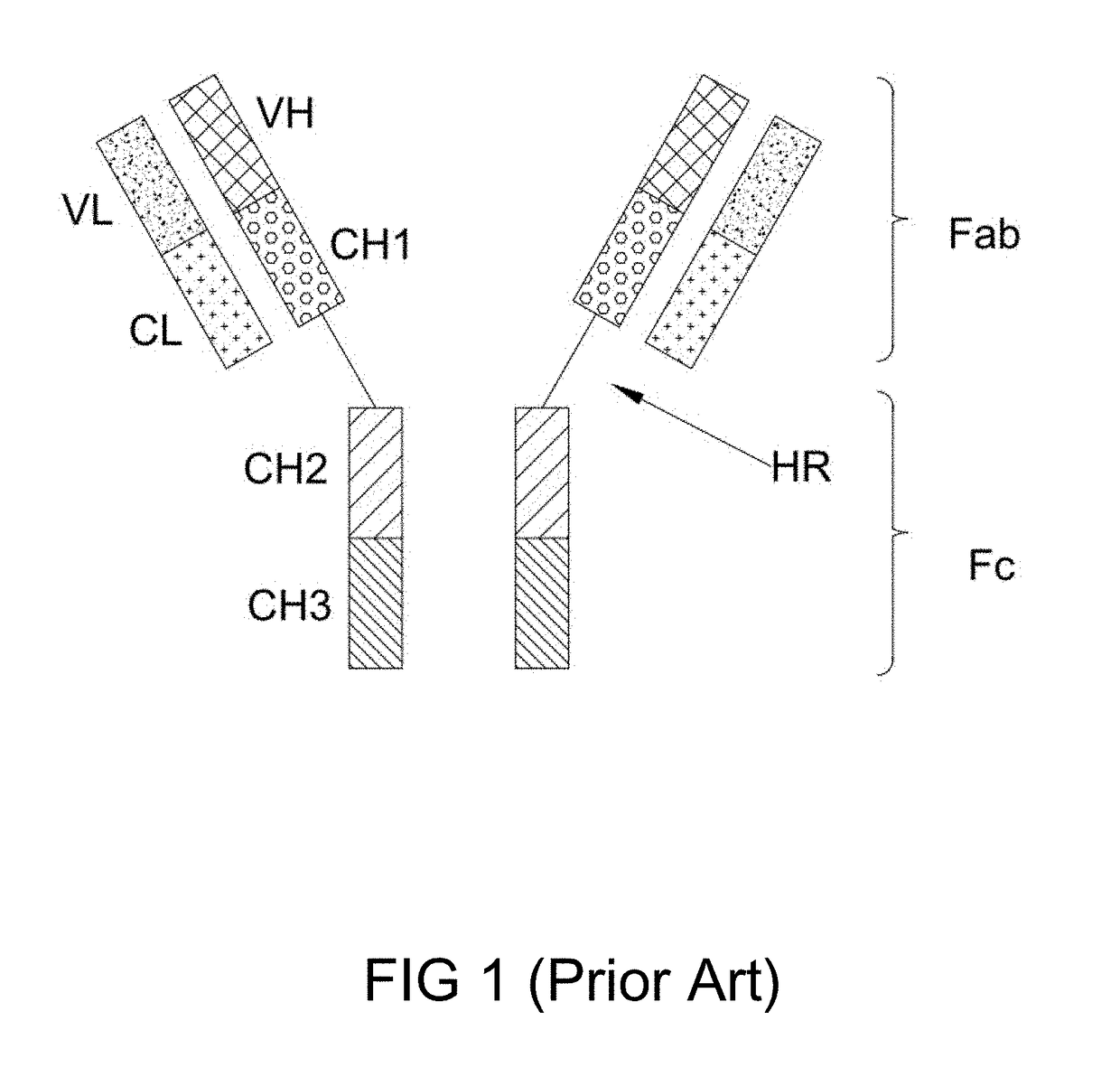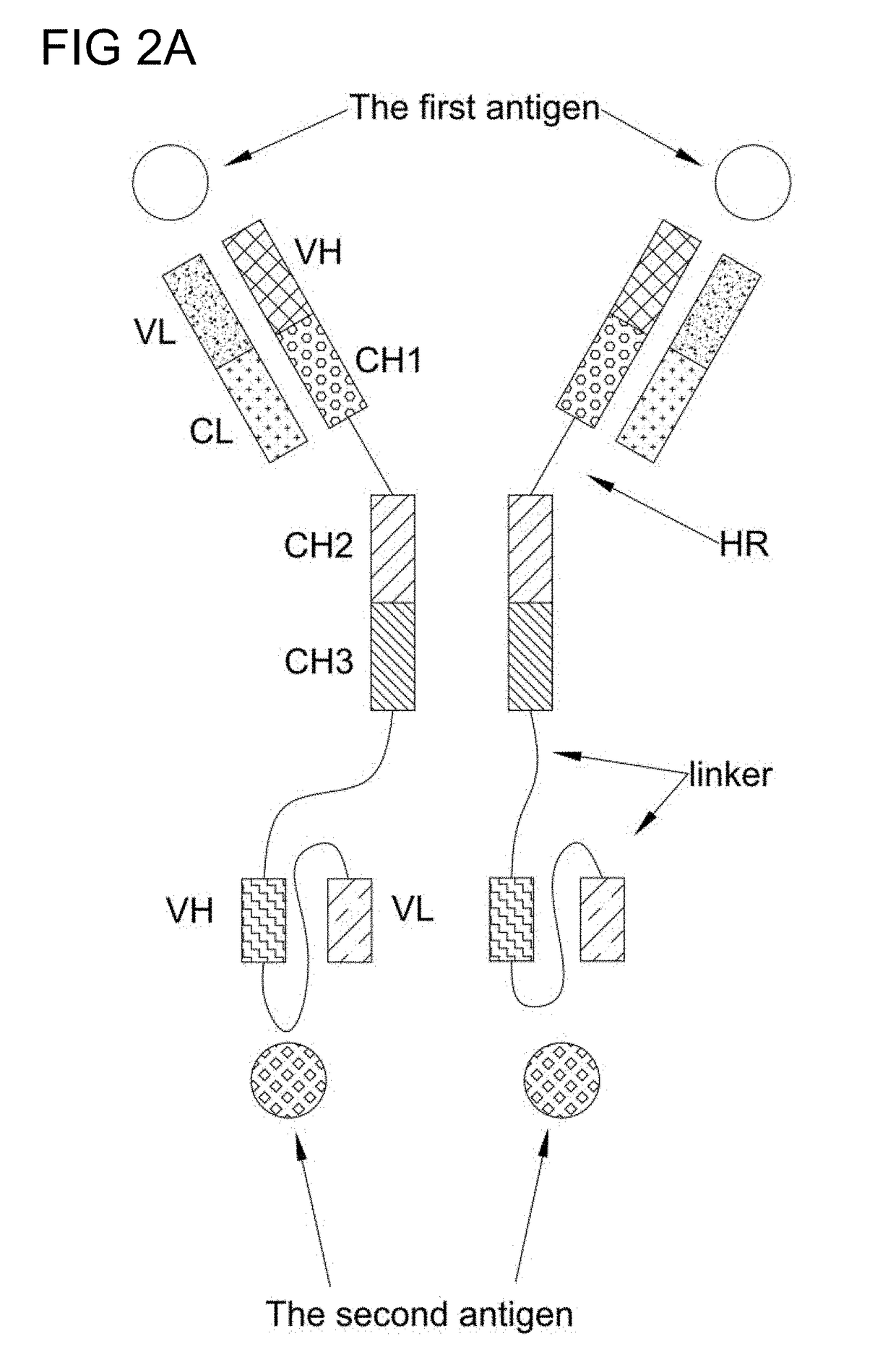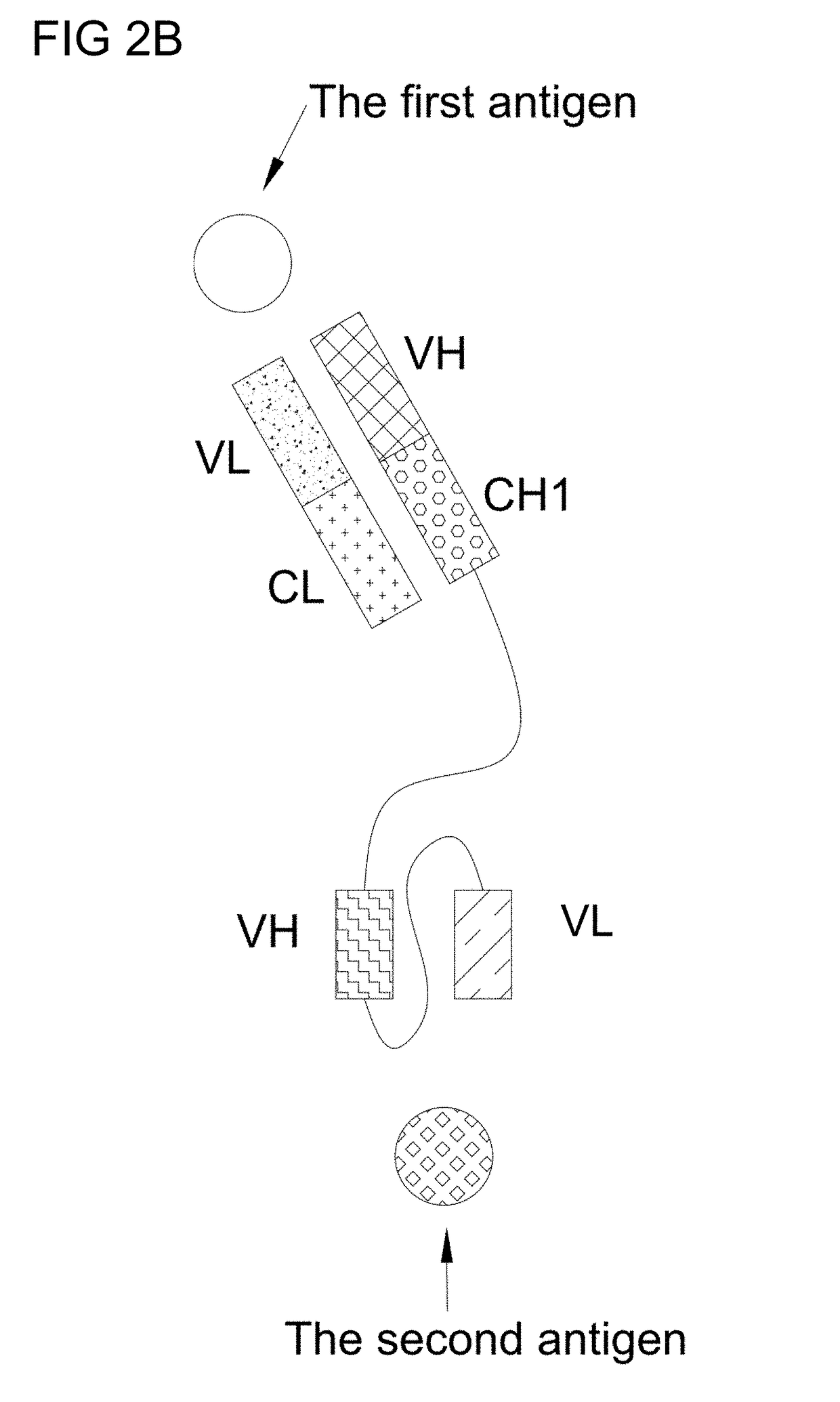Bi-specific antibodies and uses thereof
a technology of bispecific antibodies and antibodies, applied in the field of cancer treatment, can solve the problems of loss of antibody function, difficult to chemically link antibodies to peg-nps, and drugs that cannot easily diffuse from peg-nps to cancer cells, and achieve the effect of increasing expression levels
- Summary
- Abstract
- Description
- Claims
- Application Information
AI Technical Summary
Benefits of technology
Problems solved by technology
Method used
Image
Examples
example 1
Production and Characterization of Dimerichumanized Bi-Specific Antibodies (BsAbs)
[0207]1.1 Production of Murine Anti-mPEG or Anti-PEG Abs
[0208]In order to produce humanized BsAbs, three hybridoma cells, E11, 15-2b and 6-3, were identified, and their respective monoclonal Abs were collected by affinity chromatography. The binding specificity of the collected antibodies toward immobilized PEG was then determined. An exemplary binding specificity between monoclonal antibody produced by hybridoma 15-2b and PEG is illustrated in FIG. 4.
[0209]As evident from FIG. 4, monoclonal antibody produced by hybridoma 15-2b bound with CH3-PEG750-NH2, instead of NH2-PEG3000-NH2; which indicates that such monoclonal antibody specifically recognized the terminal methoxy group of the CH3-PEG molecules or the terminal hydroxyl group of PEG molecules (FIG. 4), and is thus termed anti-mPEG Ab; whereas the antibody produced by hybridoma 6-3 or E11 specifically recognized the backbone portion and not the te...
example 2
Production and Characterization of Monovalent Humanized BsAbs
[0224]2.1 Production and Characterization of Monovalent Anti-PEG (E11) BsAbs
[0225]Monovalent anti-PEG BsAbs were generated by fusing the Fab fragment of a humanized antibody derived from the anti-PEG antibody E11 to single chain antibodies with specificity for tumor-associated antigens.
[0226]Specifically, the hE11 Fab fragment was fused a single-chain antibody fragment (scFv) derived from anti-TAG72, anti-EGFR (epidermal growth factor receptor) or anti-HER2 / Neu antibodies (FIG. 9). CHO cells that stably expressed the monovalent BsAbs were generated and culture medium from each expression cell line was collected.
[0227]The binding specificity of monovalent BsAbs with their target proteins was measured by collecting the culture medium of BsAbs producing cells, adding the collected medium to cells that expressed the target protein, then determining the binding by ELSA. After washing the cells, the bound BsAbs were detected by ...
example 3
Construction and Characterization of Dimeric Humanized Knob in Hole BsAbs
[0247]3.1 Production of Knob in Hole Anti-PEG (h6.3 or h15.2b) Anti-HER2 or Anti-CD19 BsAbs
[0248]Recombinant DNA technology was utilized to create BsAbs derived from the cDNA coding regions of VH and VL of either an anti-HER2 antibody (C6) or an anti-CD19 antibodies (BU12), and the humanized anti-methoxy-PEG monoclonal h15-2b or the humanized anti-PEG antibody h6.3, with the employment of the “knobs-into-holes” strategy and immunoglobulin domain crossover approach, for heterodimer formation and correct antibody heavy chain and light assembly.
[0249]For generating correctly assembled antibody, the light chain Cκ domain and heavy chain CH1 domain within the antigen binding fragment (Fab) of either BU12 or C6 antibody were exchanged, while the anti-PEG antibodies were kept unmodified. In particular, Cκ of the tumor antigen antibodies BU12 and C6 was replaced with the partial CH1 fragment and partial hinge of that a...
PUM
| Property | Measurement | Unit |
|---|---|---|
| Fraction | aaaaa | aaaaa |
| Volume | aaaaa | aaaaa |
| Fluorescence | aaaaa | aaaaa |
Abstract
Description
Claims
Application Information
 Login to View More
Login to View More - R&D Engineer
- R&D Manager
- IP Professional
- Industry Leading Data Capabilities
- Powerful AI technology
- Patent DNA Extraction
Browse by: Latest US Patents, China's latest patents, Technical Efficacy Thesaurus, Application Domain, Technology Topic, Popular Technical Reports.
© 2024 PatSnap. All rights reserved.Legal|Privacy policy|Modern Slavery Act Transparency Statement|Sitemap|About US| Contact US: help@patsnap.com










